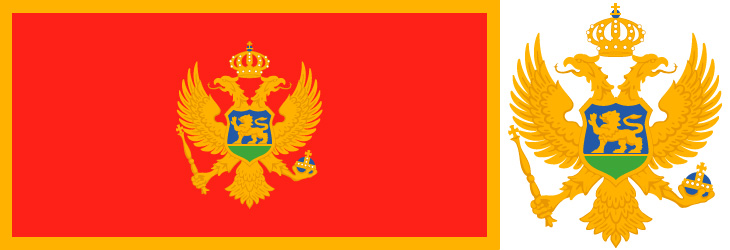History and tradition
A state with a long tradition, the meeting point of different cultural and religious influences on the border of Orthodox East and Catholic West, today’s Montenegro is a multi-confessional and multi-ethnic environment functioning in perfect harmony.
Traces of human presence date from the distant Paleolithic times, evidence of which has been found at the archaeological site Crvena Stijena (Red Rock). The first known ethnic groups, numerous Illyrian tribes originated from the 5th-2nd centuries B.C. After this period, the region became part of the newly formed province of Prevalis, under the patronage of Imperial Rome. Evidence of this period are found in the numerous settlements of an urban type, formed around previous Illyrian settlements – Doclea, Municipium S, Medun, Budva, Ulcinj, Risan, etc.
After the collapse of the great Roman Empire, this region was conquered by Byzantine rulers, which in the middle of the 6th century were faced with the emergence of the Slavs. After several centuries of ethnic assimilation of numerous Christianised Slavs with the native and Roman population, the origins of the first state organisation were started at the beginning of the 9th century – historically known as Doclea, headed by Prince Petar. Doclea, known as Zeta from the 11th century, as a principality and kingdom, with the respectable Vojislavljević dynasty and its own church structure – the famous archdiocese of Bar, existed until the end of the 12th century, when its territory was conquered by the Serbian Nemanjić dynasty.
 |
In the second half of the 14th century and during the 15th century, Doclea-Zeta restored its state sovereignty. From the 15th century, Montenegro was ruled by the Balšić and Crnojević ruling families. New political and historical circumstances were created with the emergence of mighty Ottoman invaders. Century-long battles were conducted against them.From the 17th century, Montenegro was ruled by the Petrović-Njegoš dynasty. Secular rulers were also spiritual rulers for 155 years, after which is became a principality, and after that a kingdom. At the Berlin Congress of 1878, Montenegro became an internationally recognized country.
After World War I and the fall of the Petrović-Njegoš dynasty, Montenegro became part of the newly formed South Slavic states – the Kingdom of Serbs, Croats and Slovenes, and subsequently the Kingdom of Yugoslavia. After restoring part of its state sovereignty, following World War II, Montenegro had the status of republic, and was a federal member of the Federal People’s Republic of Yugoslavia, Socialist Federal Republic of Yugoslavia, Federal Republic of Yugoslavia and State Union of Serbia and Montenegro.By the majority decision of its citizens, Montenegro restored its independence on May 21, 2006, becoming an internationally recognised state.
Source: https://www.montenegro.travel